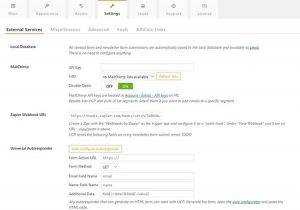The numbers are shocking: while shopping cart abandonment is always a common problem in eCommerce, (according to VentureBurn, 68% of online carts are abandoned during checkout), for mobile customers, the numbers are even more astounding. 97% of mobile shopping carts are abandoned during the checkout process. Why are mobile shoppers abandoning carts at such an astounding rate? The reasons vary: bad design, slow loading speeds, tedious registration forms, and limited payment options are some of the most common reasons. So how can you design the ideal mobile shopping cart for your B2B buyers?
In the words of the late Dr. Stephen Covey: “Begin with the end in mind.” Design your mobile shopping cart with conversion in mind. With props to Dr. Covey, here are our “4 Habits of Designing Mobile Shopping Carts”:
4 Mobile Shopping Cart Design Best Practices
- KISS – Keep It Seriously Simple. Mobile shoppers are typically using their mobile device for convenience on the go. They may be checking out your website and selecting items while they are waiting for something else to happen, which means there is a finite amount of time for them to complete their order. If the order isn’t complete before their wait is over, they’ll leave and most will not return. A checkout process that is too complex or requires information that is not absolutely essential is a recipe for an abandoned cart, so keeping it simple and only asking for the bare minimum of information necessary to actually complete the order will increase the percentage of filled carts that convert to orders placed.
- Use “native mobile” design. Many mobile-optimized shopping cart designs are simply shrunken-down versions of an existing site designed for desktop users. This creates problems when the design doesn’t really work well on the small screen of a mobile device. What are some of the most common problems with non-native mobile shopping cart design? Tiny buttons, hard-to-read text, and a lack of offline access, are a few of the most common issues. Native mobile designs are those that are intended to be viewed and controlled on a small touch screen.
- Deliver convenient payment options. Most mobile and desktop sites offer the option to pay by credit card, which is great, but just as many online shoppers prefer to use services like PayPal for online purchases, mobile shoppers are showing a preference for using one of the growing number of mobile wallet apps, such as Google wallet, Apple Pay, Softcard or other mobile payment apps offered by banks and credit card providers. How much of a difference can offering these options make in your shopping cart conversion rate? A recent survey by Adobe of 400 U.S. consumers found that overall, mobile and eCommerce shopping cart conversions increased by 10% when digital-wallet payment options are available. The study also showed a clear preference among mobile users for digital wallets: 23% of purchases on smart phones use digital wallets compared with 19% on tablets and 16% on desktop computers.
- Make the experience interruption-proof. Remember when we said that your mobile users are on the go and doing other things? The possibility (indeed, near certainty) that the shopping cart process will be interrupted by a phone call, another app, or something happening in the “real world” is a critical point that you must build into your mobile design. “Interruption proof” your design by making sure that if shoppers must exit your app or cart for any reason, they don’t lose their place in the checkout process. Make sure that customer registration details are saved so that customers can exit the cart to take a call or shop for more items, then return to the cart with all details intact.
The mobile shopping channel is growing by leaps and bounds: it now represents more than 30% of all online shopping transactions. Yet, with staggeringly high cart abandonment rates, it’s clear mobile shoppers are frustrated by carts that are not really designed with them in mind. Design your mobile shopping cart for conversion to ensure that your shoppers don’t join the ranks of frustrated users who fill their carts and walk away.
Digital & Social Articles on Business 2 Community(84)






